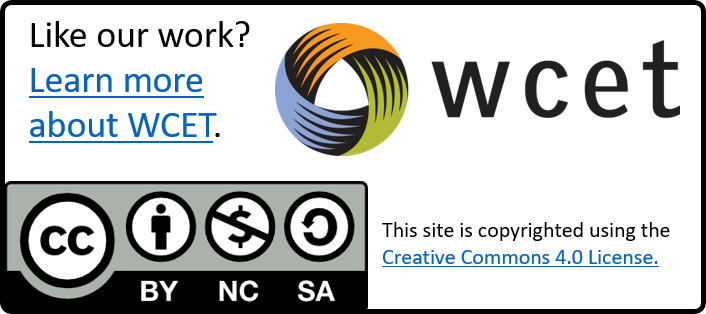Even before the COVID-19 global pandemic, higher education was struggling to make sense of what David La Piana and Melissa Mendes call a VUCA world in The Nonprofit Strategy Revolution: Real-Time Strategic Planning in a Rapid-Response World. Originally coined by the US military to describe a post-Cold War world, VUCA stands for:
- Volatile– The world is rapidly changing and is no longer static.
- Uncertain– The world is unpredictable.
- Complex– The world is interwoven and interconnected.
- Ambiguous– We no longer understand what the change levers are or even the extent to which everything is interconnected.
Or, as Mats Lindgren and Hans Bendhold in Scenario Planning: The Link Between Future and Strategy, Revised and Updated describe it, a raplex world— “a rapidly changing, complex and unpredictable environment.”
Even though institutions are well past the immediate challenges they faced in February and March as they rapidly pivoted their face-to-face offerings into remote offerings, the uncertainty and complexity of our world is undiminished. Every college and university is grappling with what the fall will look like as they struggle to balance community health with a desire to return to campus. And few, if any, are looking beyond the fall to understand the long-term impact of the pandemic on their institution and higher education in general.
 A few weeks ago, WCET started a series of posts focusing on What’s Next for higher education. So far those posts have been focused on tangible concerns like lessons learned, open educational resources, professional licensure, and the use of chat bots to improve campus communications.
A few weeks ago, WCET started a series of posts focusing on What’s Next for higher education. So far those posts have been focused on tangible concerns like lessons learned, open educational resources, professional licensure, and the use of chat bots to improve campus communications.
Over the next several weeks, we’ll also be looking at what we think the fall and beyond will look like for community colleges, public and private research universities, public regional universities, and private universities in a series we’re calling Fall and Beyond: Higher Education in the Age of COVID-19 and Other Disasters.
In this first post, we’ll take a look at the current landscape and several general scenarios while in subsequent posts delve into the likeliest scenarios for different segments of higher education.
Our Current State of Affairs
The Virus
As of the morning of May 6, 2020, The New York Times reported that more than 1.21 million Americans have been infected with the coronavirus and at least 71,000 have died. 22 states and the District of Columbia have shown recent increases in newly reported cases and 15 states and one territory show decreases in newly reported cases. New York has seen the largest number of both cases and deaths followed by New Jersey, Massachusetts, Illinois, and California. With widespread testing still lagging (there have only been a little over 7.5 million tests administered according to The Atlantic’s COVID tracking) and a lack of dependable antibody tests, both infection numbers and COVID-19 related deaths are likely to be grossly under-reported in the United States.
The lack of antibody testing is especially problematic given that both federal and state guidelines for re-opening businesses and schools hinge on both the availability of antibody tests and the assumption that those with antibodies are safe from contracting the coronavirus again. Conservative estimates indicate that the United States will need at minimum 500,000 tests per day to safely reopen until a vaccine is ready. And the most optimistic (and largely dismissed) timelines for the development and deployment of a vaccine are January 2021 at the earliest, while more realistic, but still very optimistic, timelines suggest at least 18 months before a vaccine is ready to administer.
The Economy
The U.S Department of Labor reported that as of April 30th, over 30 million Americans had applied for unemployment aid since mid-March with the unemployment rate likely to be much higher since many individuals attempting to apply have encountered state systems that are crashing and unprepared for the crush of applications. And there is every indication that when it releases unemployment figures for April, the data will reveal the worst unemployment rate since the Great Depression. Additionally, the U.S. Bureau of Economic Analysis reported that the national GDP for the first quarter of 2020 showed a 4.8% drop, the first time there has been a contraction since 2014.
 The resulting tension between re-opening businesses and “flattening the curve” aside, there is little evidence that even after states “re-open,” individuals will return to many businesses or even have the income to do so.
The resulting tension between re-opening businesses and “flattening the curve” aside, there is little evidence that even after states “re-open,” individuals will return to many businesses or even have the income to do so.
As a result, states are looking at significant drops in sales tax revenue and franchise taxes while they are paying out more in unemployment, aid to businesses, and public health costs.
The Economic Impact on Higher Education
Unsurprisingly, the economic impact on higher education will be severe. As state tax bases shrivel, appropriations for public higher education are already eroding and will likely erode even further.
The consulting firm McKinsey and Company predicts that at least 25% of public colleges and universities and at least 50% of private institutions will see at minimum a five percent budget shortfall. A minimum 25% of public IHE and 50% of private will see at least a 5% budget shortfall. Many schools are already decreasing salaries, furloughing staff, and freezing all hiring; Others have already declared financial exigency. And in March, Moody’s downgraded its outlook for higher education in 2020 from stable to negative.
Higher Education Enrollments
Further complicating planning for colleges and universities is uncertainty over fall and beyond enrollments. Although it is still too early to completely understand student experiences with and attitudes towards the rapid pivot to remote instruction, several early surveys indicate that many students are unhappy. For example, a survey of over 1200 students by educational resource company One Class found that 75.5% of respondents did not feel like they were receiving a “quality e-learning experience” since the remote learning pivot. And a Niche.com survey of over 23,000 college and graduate students showed that the majority of those surveyed found online classes less effective than face-to-face and were unlikely to consider online education in the future based on their current experiences.
There is even less certainty when considering higher education enrollments of graduating seniors. An AACU survey of college and university presidents found that 84% believe there will be a drop in enrollments for Fall 2020. The American Council on Education recently released projections suggesting that fall enrollments will be down 15%, including a 25% decrease in international student enrollments, a traditionally lucrative student population. And an Art & Science Group April 2020 poll of high school seniors planning on going to college in the fall discovered:
- 40% had not made a deposit.
- 12% of students who had made a deposit said they no longer planed on enrolling full-time at a 4 year school in the fall.
- 52% have a parent/guardian who has lost a job, been laid off, or been furloughed.
- 59% have no interest in enrolling in an online degree program, up from 49% in March.
This data mirrors a similar survey of over 7,000 college-bound seniors conducted by Eduventures in late March/early April. In that survey, Eduventures found:
- the majority of students indicated that there was a chance they might delay entry in the fall;
- 34 percent report loss of family income; and
- 30 percent were concerned their college choice may change.
The result is a grim picture of a declining fall enrollment with no sense of when enrollment numbers might recover.
Fall 2020: What We Know
Despite unknown infection projections and uncertain enrollments, or perhaps because of these factors, many institutions feel it is necessary to announce plans for a return to face-to-face instruction in the fall.
An analysis of self-reported data to the Chronicle of Higher Education shows 75% of public 4-year institutions and 67% of private 4-year institutions are planning on resuming face-to-face instruction in the fall. This includes several major public university systems including North Dakota, Iowa, Alabama, the University of Texas System, Georgia, Maine, Maryland, Nebraska, and Utah.
University presidents find themselves in a bind. As Lee Gardner writes for The Chronicle of Higher Education:
How do you decide if it will be safe to bring students back to campus for the fall when there’s no reliable prediction of what course the disease will take? Wait too long for clarity to emerge, and you’re scrambling. Act too soon and you might miss the chance—albeit perhaps a slim one—for an ordinary move-in day. What happens if the virus is contained this summer, then roars back in the fall?
Some university presidents have responded with optimistic rhetoric, such as Purdue University’s president and former Republican governor of Indiana, Mitch Daniels. Daniels recently proclaimed that Purdue is “determined not to surrender helplessly” to the virus. And went on to explain that shutting down campus “has come at extraordinary costs, as much human as economic, and at some point, clearly before next fall, those will begin to vastly outweigh the benefits of its continuance.”
Over 700 universities report that there are still slots available for their fall classes as both prospective and current students struggle to decide what they will do in the fall. Residential institutions have lost hundreds of millions of dollars as they provide refunds for room and board from the spring term while endowments are reeling from drops in the stock market. Add to the mix that residential universities are, in part, selling a college “experience” that is impossible to directly translate into a virtual environment and you see profound pressure to bring students, faculty, and staff back to campuses.
Fall 2020: The Possible Scenarios
Trying to predict what the fall term will look like right now feels a bit like trying to see through a muddy window—you can catch glimpses of shapes but not clear picture. In the next few weeks, we’ll take a look at the most likely scenarios for four different types of institutions:
- community and technical colleges,
- public and private research universities,
- regional and urban public universities, and
- small to medium sized private universities.
We’ll specifically explore:
- Likely fall scenarios;
- Biggest challenges and opportunities schools will face in the fall;
- Forecast what higher education will look beyond the fall and the impact of the crisis over the next several years; and
- What schools should be doing right now.
Until then, it’s worth touching on a few of the scenarios higher education leaders and experts may be considering. For example, Inside Higher Ed is currently publishing a series of blog posts by Edward J. Maloney and Joshua Kim exploring fifteen possible scenarios:
- Back to normal
- Late start
- Moving fall to the spring
- First-year intensive
- Graduate students only
- Structured gap year
- Targeted curriculum
- Split curriculum
- Block plan
- Modularity
- Students in residence, learning virtually
- Low-residency model
- HyFlex model
- Modified tutorial model
- Fully remote
I believe that we will likely see a combination of several of these scenarios emerge as institutions craft a strategy for the fall term. How these combinations develop will differ based on several factors, but especially based upon the type of institution.
What everyone agrees will not happen is a return to “normal.” Face-to-face as we know it, for the foreseeable future, is gone. Large lecture courses with hundreds of students crammed into a lecture hall will be gone as schools struggle to adapt to social distancing in the classroom. Regardless of the size or type of school, all institutions will struggle to configure public spaces differently. For some schools this may accelerate a recent trend in building flexible spaces that can be reconfigured in a variety of ways. Libraries and computer labs will look different and be limited to smaller numbers of students. And recent reductions in faculty and staff will leave fewer people in place to make these changes and meet student needs.
Our new “normal” will mean no large gatherings on campus, including athletics and new student orientation events. Campuses will be forced to spend more of their dwindling resources on health and sanitation, decidedly “unsexy” but increasingly critical areas. More attention will be paid to how labs and other practical experiences are fulfilled. These activities will undoubtedly require greater outlays of human resources at a time when those resources are already spread too thin. Faculty and staff are exhausted from the current push and as we move into the summer, institutions will have to find ways to compensate faculty who are on nine- or ten-month contracts for professional or course development. And some institutions are already finding that faculty are balking at provisional fall plans that would increase their workload without any compensation. Fall’s “new normal” is likely to look uncertain and contentious.
Regardless of the size or type of institution, there are several things that all schools should be doing as they respond to this raplex, VUCA world.
Take a breath and look back
If you haven’t had a chance yet to write down everything you have done in the last few months (and why you did it) now is the time for reflection. What did you do, why did you do it, and what worked/what didn’t work? Who did it? What could you do better? And, perhaps most importantly, who is responsible for tracking and disseminating all these lessons learned?
Understand your real instructional needs
As you think about your course offerings for the fall and the spring, determine the minimum viable courses you need to offer for your students. Now is probably not the time to roll out new electives; this is the time to double down on your core curriculum. If there are courses that a very small number of students need that cannot be postponed until the spring, can you leverage consortia to provide those courses? You should also consider:
- Academic and student support services needed to help students succeed in these classes,
- Faculty supoprt to help re-design courses,
- Faculty professional development they need to successfully offer those courses,
- Resources to help faculty offer the courses in whatever new or modified modality you decide to use, and
- Availability of instructional design resources to help faculty with the re-design process.
Map your existing resources to your needs and determine any gaps
Now is the time to do a careful and realistic inventory of your resources—human, economic, and technical. What sort of faculty development program do you already have in place? What instructional design capacity do you have? Are there faculty and staff with expertise that can be repurposed for your new needs? And where are your gaps? You may not be able to fill all of those gaps, but understanding where they are and which ones you should prioritize filling will be critical as you prepare for the fall and beyond.
Build realistic scenarios beyond the fall
No one has had time to be proactive over the last several months and as we all continue to play some devilish version of Whack-A-Mole finding the time, space, and wherewithal to think beyond tomorrow will continue to be hard. But we have to move beyond immediate concerns to start thinking about what our campuses and country will look like beyond fall. Although it is tempting to think about fall as the destination, we should really be thinking about it as a bridge. And that means beginning to build evidence-based scenarios for what 2021 and beyond might look like. What might enrollment numbers look like? What types of programs might you need to offer? What revenue lines are you likely to lose and/or gain? Who are your likely students?
When we seem to know so little and have control over so little, it’s human nature to want to predict the future so we have some certainty. So it’s easy right now to default to predictions and frustrating because we simply don’t have the data to make those predictions. Instead, we should consider shifting our focus from predicting the future to what Nick Montfort calls “future-making” in his 2017 book The Future. This is more than a change in semantics. As Montfort explains,
I’m calling the act of imagining a particular future and consciously trying to contribute to it future-making. This term is meant to distinguish a potentially productive perspective on the future (let’s build a better future) from a less productive one (let’s predict what will happen for instance, so we can react quickly by anticipating it).
As we collectively grapple with what the fall term looks like, we must also think about how we can use fall to build a bridge to what comes next. And if we don’t build that bridge with the “beyond” in mind, we run the risk of not liking where we’ll end up.
Next week—Fall and Beyond: Public Regional and Urban Universities

Van Davis
Policy and Planning Consultant, WCET
vdavis@wiche.edu @historydoc

Image Credits
Fall Leaves Photo by Autumn Mott Rodeheaver on Unsplash
Bulle und Bar Frankfurt Photo by Eva K CC BY-SA (https://creativecommons.org/licenses/by-sa/2.5)
 A few weeks ago, WCET started a series of posts focusing on What’s Next for higher education. So far those posts have been focused on tangible concerns like
A few weeks ago, WCET started a series of posts focusing on What’s Next for higher education. So far those posts have been focused on tangible concerns like  The resulting tension between re-opening businesses and “flattening the curve” aside, there is little evidence that even after states “re-open,” individuals will return to many businesses or even have the income to do so.
The resulting tension between re-opening businesses and “flattening the curve” aside, there is little evidence that even after states “re-open,” individuals will return to many businesses or even have the income to do so.

1 reply on “Fall and Beyond: Higher Education in the Age of COVID-19 and Other Disasters”
[…] many four-year institutions adamant that students be on campus regardless of their course modality? I’ve written about the political pressures that public universities are facing in many states to resume campus operations and that clearly is […]